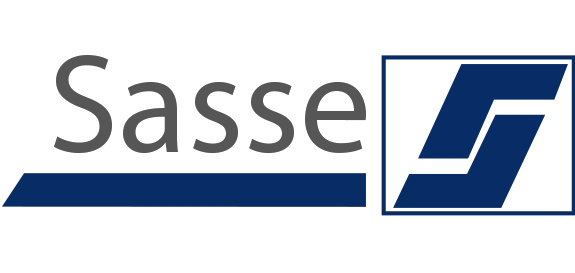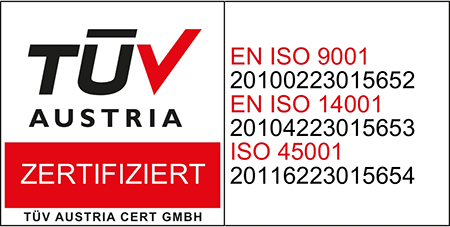GIVE, TAKE AND DEVELOP TOGETHER: THE NEW ROLE OF CUSTOMERS IN FACILITIES MANAGEMENT
We are working on getting facility services out of a mental corner. Too many clients (still) see our services as a colourful and arbitrary stringing together of individual activities. In contrast, a different state of affairs has long prevailed in everyday operations: everything is linked to everything else. For example, in procurement processes for production or in supply chains, there are direct dependencies between the most diverse trades.
Making these dependencies visible is the task of “FM 21” – a holistic and transparent facility management for the 21st century. In which automation and digitalisation play their appropriate role: as accelerators and communication platforms. We need them to bring about desirable positive interactions. Just as we need them to ward off undesirable negative consequences.
We have seen convincing examples of this new way of looking at things in the recent past where we have dealt with the pandemic and its consequences. The short-term stop-and-go, the political as well as scientific about-turns: They have brought us to the edge of the predictable and predictable world. We were able to hold our own in this situation because we were able to transfer existing knowledge within the company, across business units, directly to the teams. Firstly, this has enabled us to find innovative answers to new challenges quickly and flexibly. And it has provided our customers with reliable solutions that would not have been possible with a narrow perspective on individual trades or tasks.
So what does it come down to when things don’t work as usual, as planned and as trained? On the willingness to change and on the ability to adapt the existing application knowledge to new tasks. We have found convincing answers to crisis situations wherever these forces have come into play – and where we have worked out holistic solutions with clients at eye level.
We have used this realisation to examine and realign our structures and processes. Automation and digitalisation have matured into helpful and resilient tools in the process. Without them, we would not have succeeded in making many changes as quickly and convincingly as we did. This applies equally to production, control and communication. In this way, we are moving parallel to the developments that all our customers are dealing with today. It is therefore obvious to recognise parallels and to bring together like with like. This is all the more successful when there are fewer separating interfaces: a client here, a service provider there, and a common goal on top of that – productivity, value retention, sustainability.
A logical development in this context arose from the question: Are the contracts we have with our clients actually still able to reflect the everyday life we live together? And – above all: Are they suitable to counter the rapid change with something that has a lasting effect? No. If, for example, there is no app in the service specifications, its benefits cannot be evaluated and priced. No passage in the contract is suitable for evaluating the use of cleaning robots, for example. Especially not if better, more efficient and more environmentally friendly devices come onto the market during the term.
We are in a fluid process here, moving faster than the paper we signed with our clients.
Contractual texts are therefore too rigid and too simple to keep up with ongoing processes of improvement and change. We see this especially where facility management has developed into a value-added service. Particularly the fragmentation of service specifications into individual trades leaves interactions unconsidered and thus decisively narrows the scope for design – on both sides.
Can this be changed? For example, by creating a comprehensive platform that integrates the entire range of services? There are already plenty of examples of this in other sectors of the economy. Think of ordering a menu for a company party: who would order peas or ice cubes separately? Think of buying a car: who would write out the start-stop button and central locking system separately? Think of a wellness holiday: who would take a sauna in one hotel and a shower in another?
Three examples that illustrate what makes the relationship between clients and their service providers strong: Some look for “well being” in a package, others put it together. Thanks to their professional know-how, service providers like us have the talent to adequately address and win over different customer segments with adapted package contents. This makes it possible to find solutions for a wide variety of strategies or objectives – for those who want to combine employer attractiveness with New Work and Mobile Office, as well as for those for whom sustainability and ESG are worth an increased commitment at this level. And last but not least, those who want to regain entrepreneurial joy because they can be sure that the “trappings” are not running perfectly.
Sasse Group has addressed the question: Can contract negotiations be conducted and contracts concluded in such a way that they meet this goal? The answer is a clear “yes”. Whereby certain prerequisites must be fulfilled so that intention and result match.
Prerequisite 1: The two partners must speak the same language and have a comparable level of knowledge about each other’s capabilities and wishes. This is first a task of communication and trusting knowledge transfer, less of calculation and controlling. For example, “ESG” is not an absolute value in itself, but requires weighting and prioritisation. The same applies to factors such as security, value retention or innovativeness.
Prerequisite 2: The term “facility” must be clarified. Is it a matter of pure functionality? Or do atmosphere, charisma or interaction with other entrepreneurial factors play a role? Bus depots and concert buildings may have more in common than a factory hall for tractor production and a power plant.
Requirement 3: Times and frequencies of services must run at the same pace as the use of the respective facility. In view of the strong increase in flexibility and the growing freedom of users to make their own decisions, we are moving at high speed away from the norms that dictate “weekend” or “closing time”. The flexibility of FM must be able to map this volatility.
Requirement 4: Complex buildings and facilities need holistic support and operation. Otherwise, there is a risk of friction losses and gaps in knowledge about the actual status quo. As a consequence of individual observations, we have found that every cent saved now generates at least one cent of damage if one only pays attention to the individual trades and not to the entire system.
In our view, these considerations lead to a “new work” of partnership and contract negotiations. Tendering in the previous sense, in which each individual item is decidedly predetermined, will not produce productivity, efficiency or satisfaction. Rather, both sides are well advised to work out a sustainable concept together. A concept that takes into account possible changes in the medium and long term, because this is the only way to realise the full return on investment on applied know-how.
Broken down to a simple sentence, this means that in future contract negotiations will begin with this sentence: “We want to spend X amount. What can you offer us for it?”
From this thought, clients can immediately derive the following steps that make up this new way of contract negotiations.
The first step is to pre-select the service providers, whereby the matching corporate cultures play a key role.
The second step is to define the desired goals – beyond the pure result. The results of this process step also provide the starting points for what to do if change processes appear necessary or possible during the contract phase.
Then a price framework is defined, including possible alternatives (e.g. weighting, duration) as well as the option for possible cancellations and reorders during the term.
The most complex and at the same time most valuable step concerns the subsequent definition of the process for performance management. Here, digitalisation opens up new windows for both the client and the service provider to review results and targets without the need for a high level of personnel expenditure. Every hour invested in process development pays for itself in days during the contract period. Especially since the appropriate service providers deliver the components for this process ready for use, based on their self-image and their holistic FM way of thinking.
This closes the circle under the sign of “trust”, which is rooted in the choice of partner. Consistent transparency reduces the verification of what has been agreed to spot checks – as is also the case with calibrated machines or DIN-approved tools.
FM is changing at high speed because our clients’ environment has changed dramatically and continues to change at high speed. In this context, let’s take a look at the online dashboard our teams now work with – and so do our clients. It is a result of changed work content and processes in FM. At the same time, it is also a contribution to a redesigned workflow and to improved, faster communication.
We are convinced that this approach will make it easier for everyone involved to grasp the complexity of modern facility services. It demonstrably does justice to a productive, value-adding partnership. It helps to avert irritations, delays, disruptions and economically damaging consequences that arise when the uncountable is counted and the unmeasurable is measured. The time is ripe to provide FM with the added value that comes from this perspective.




